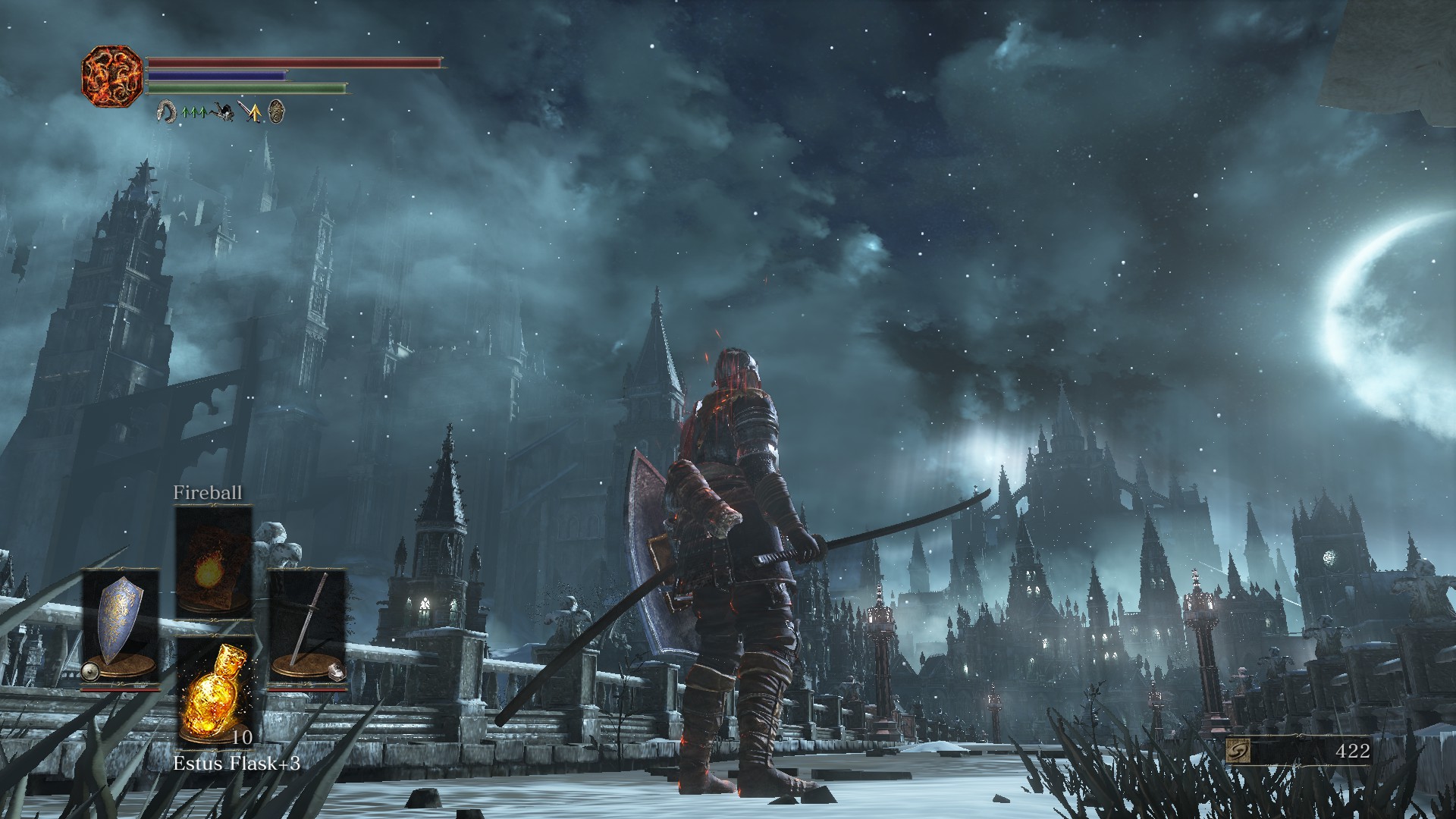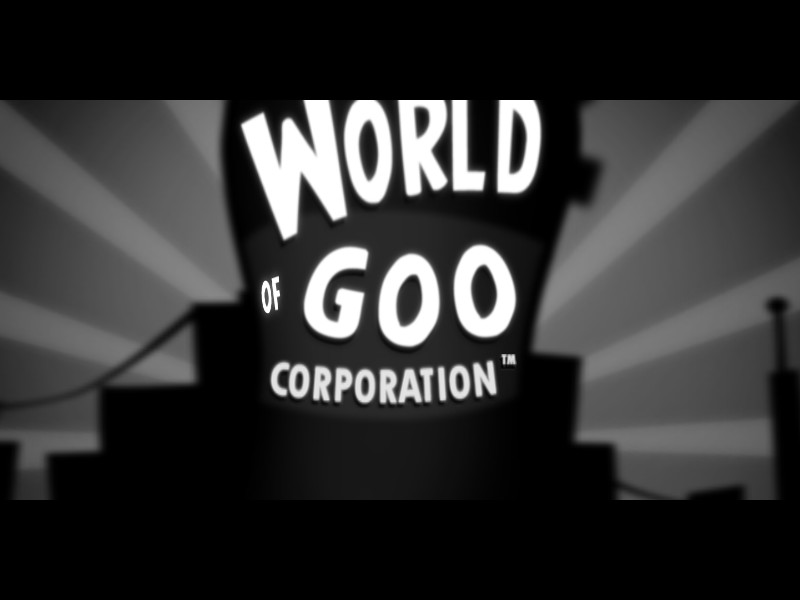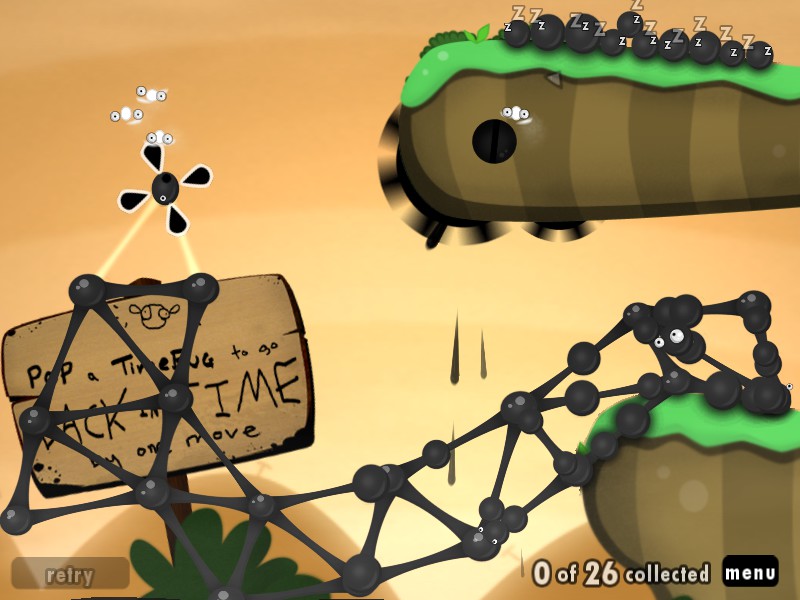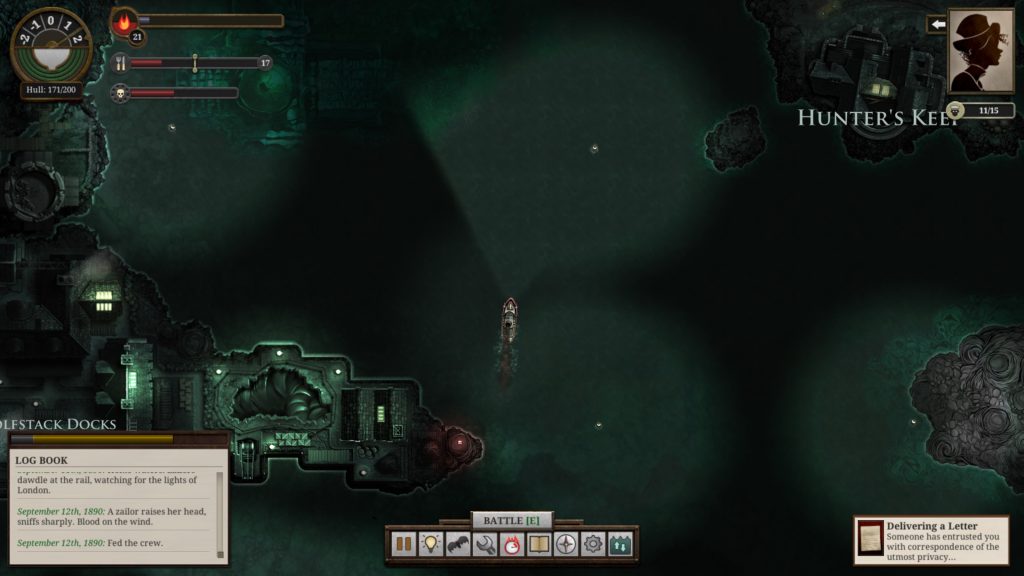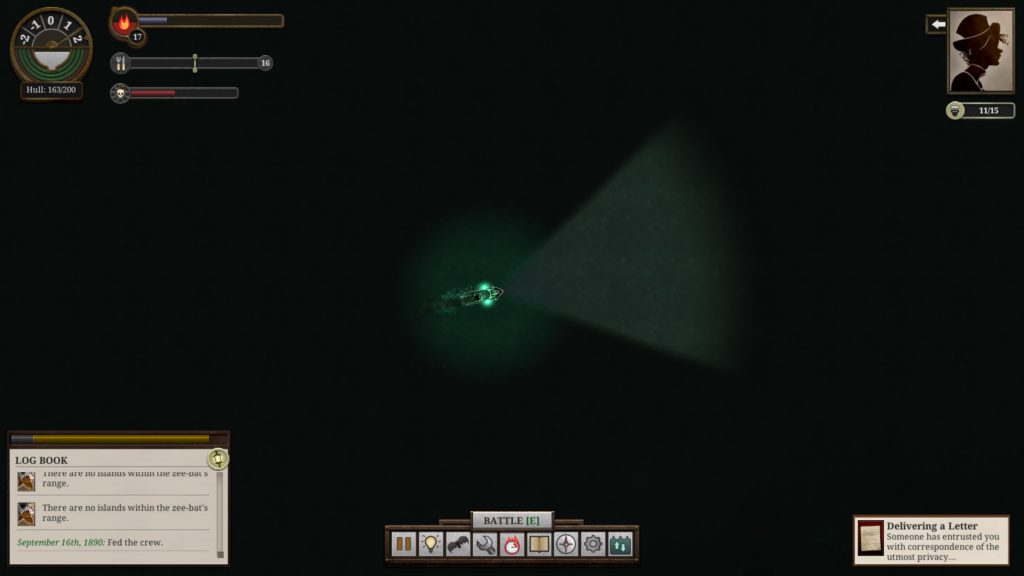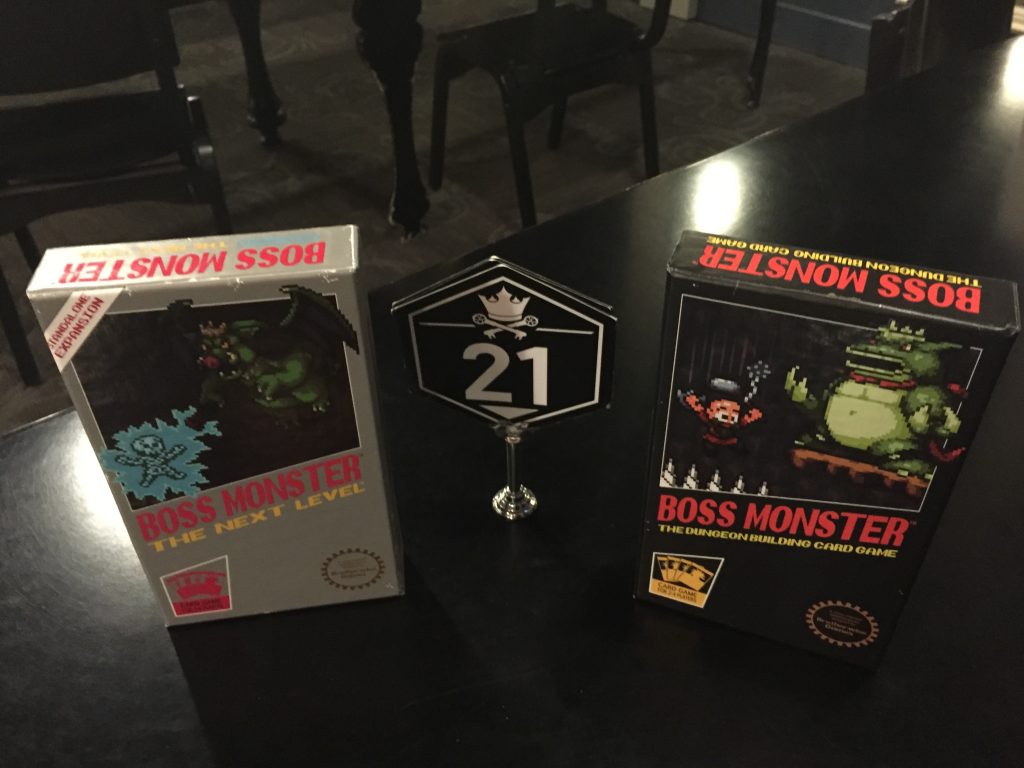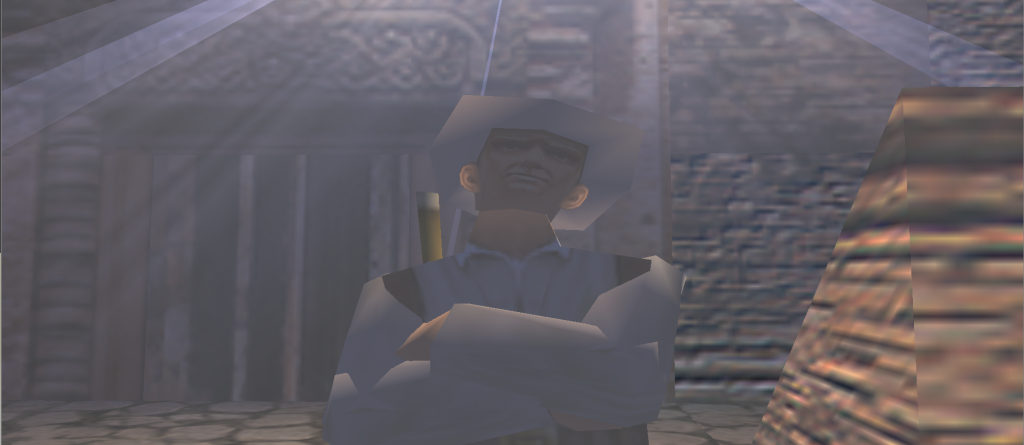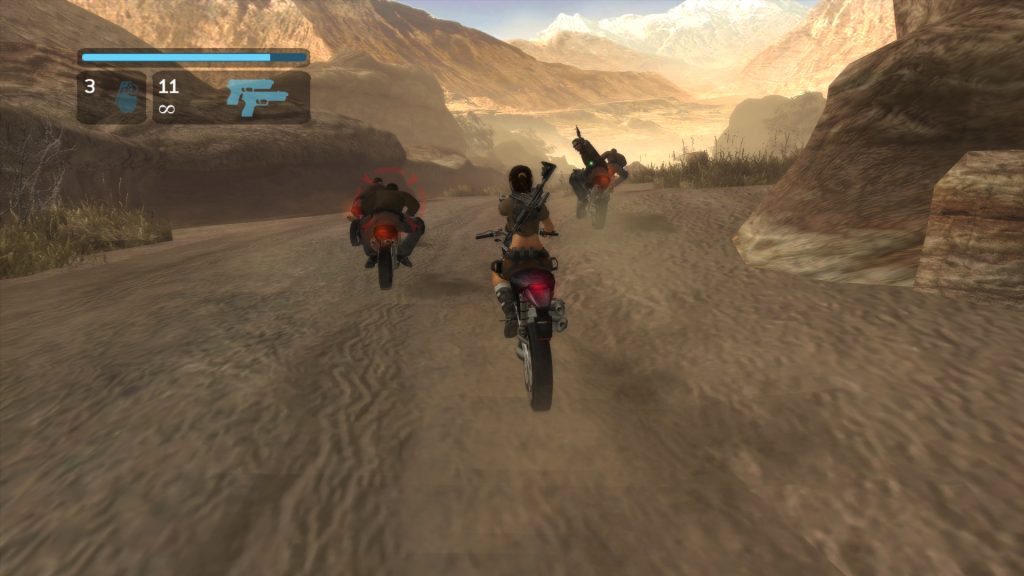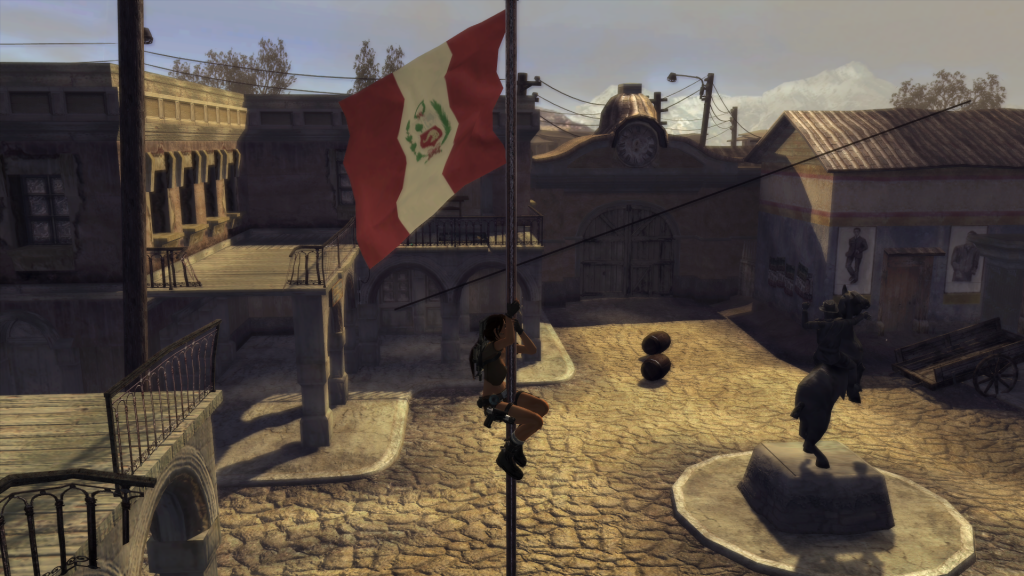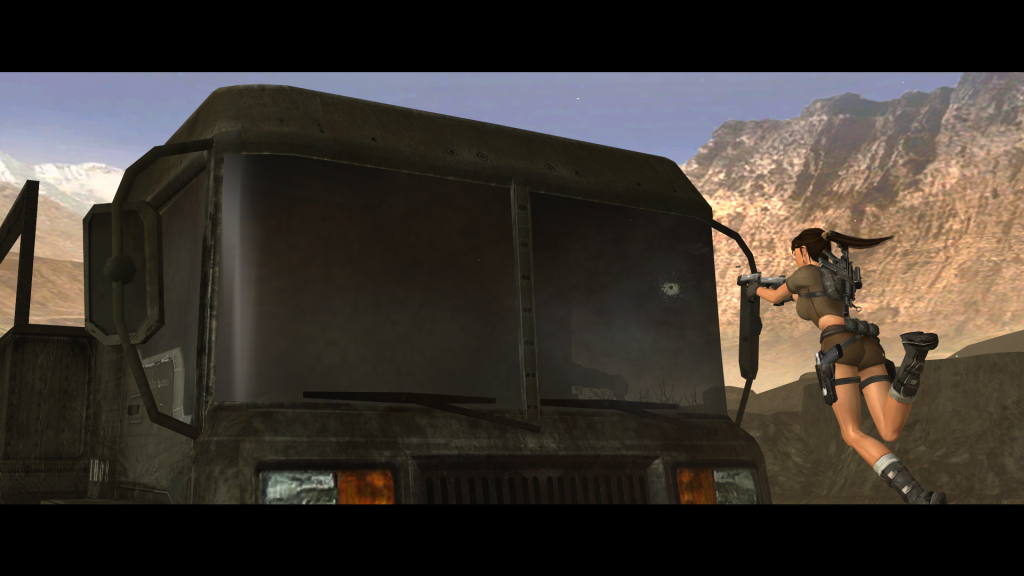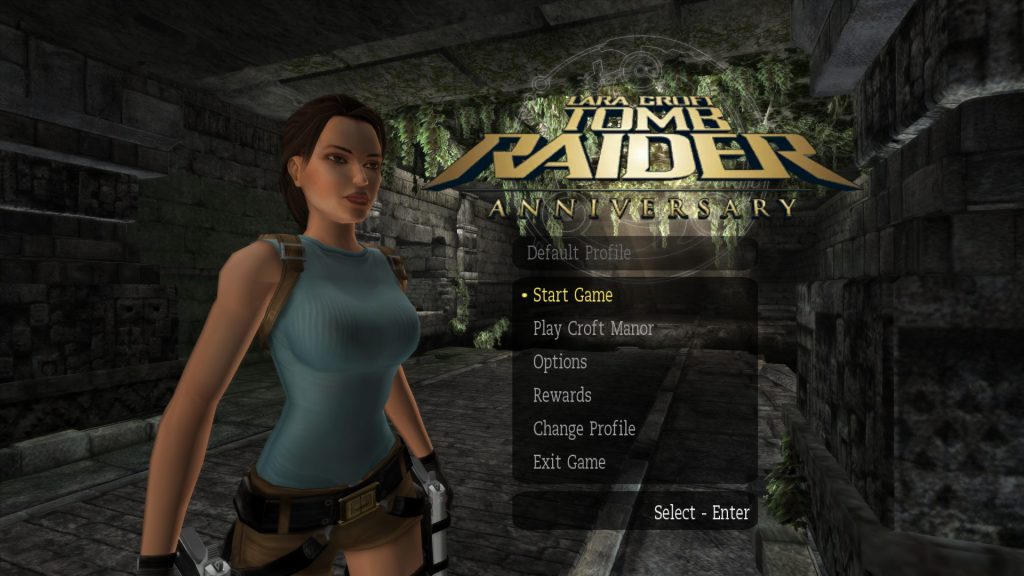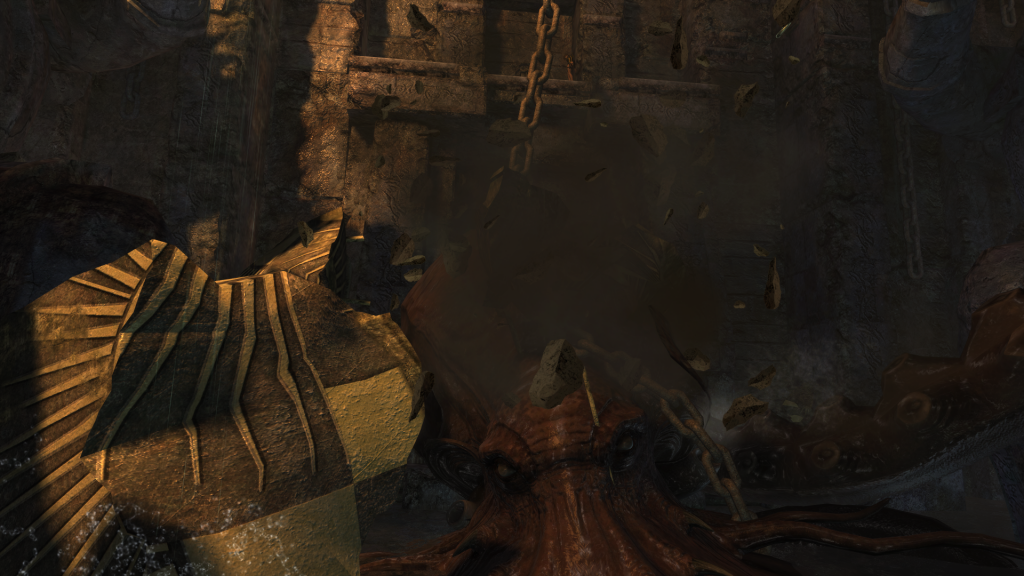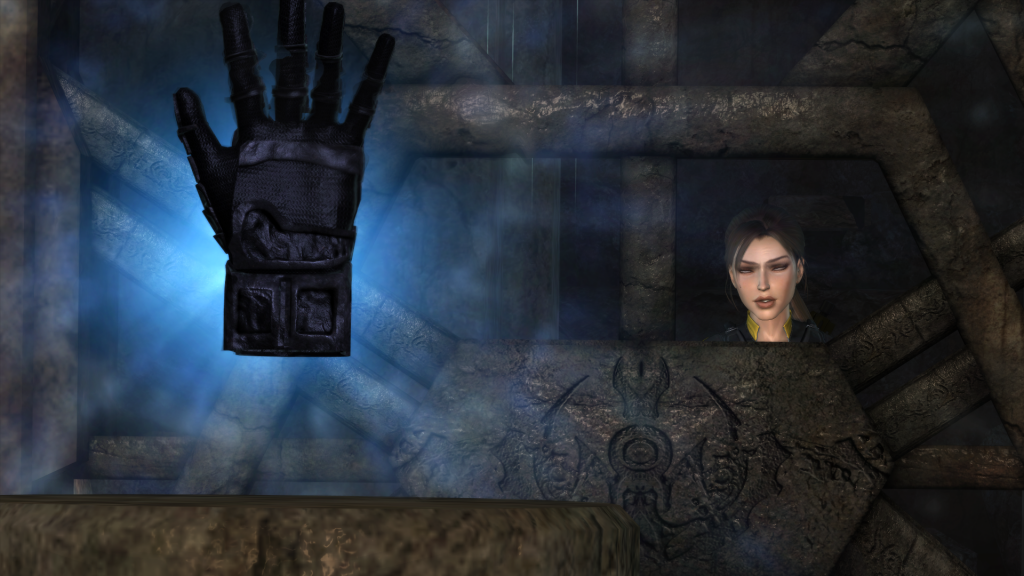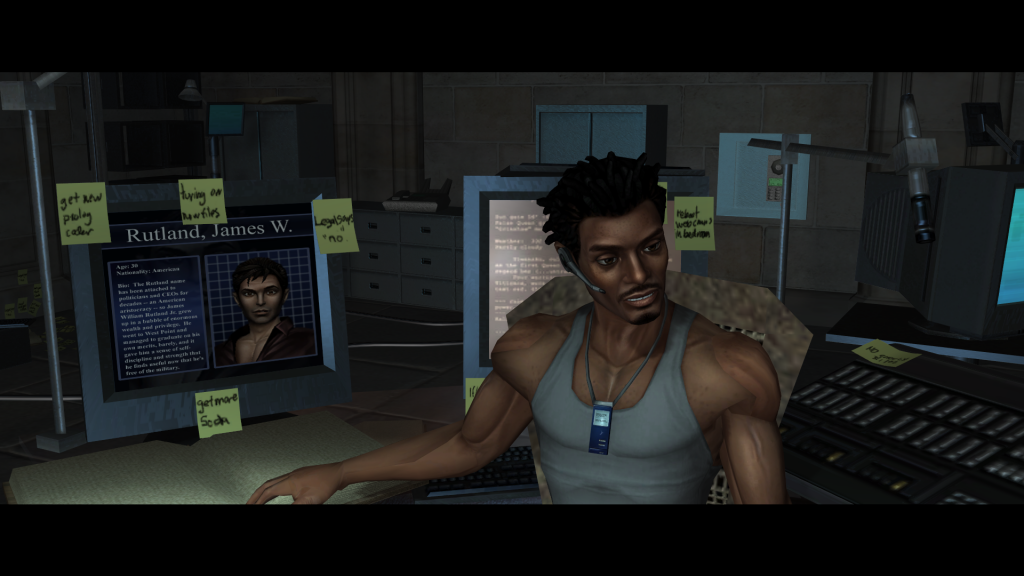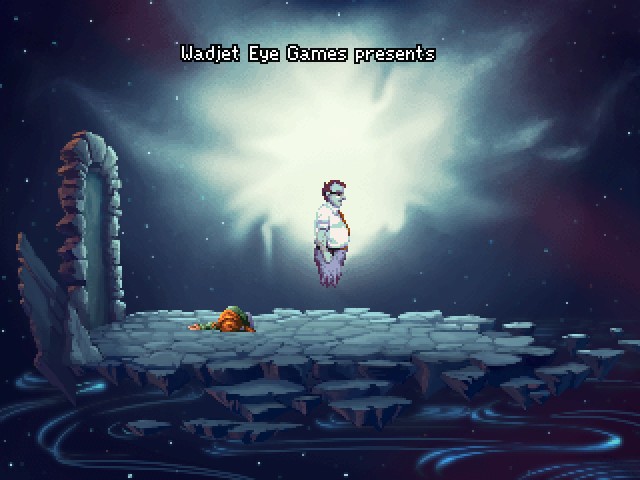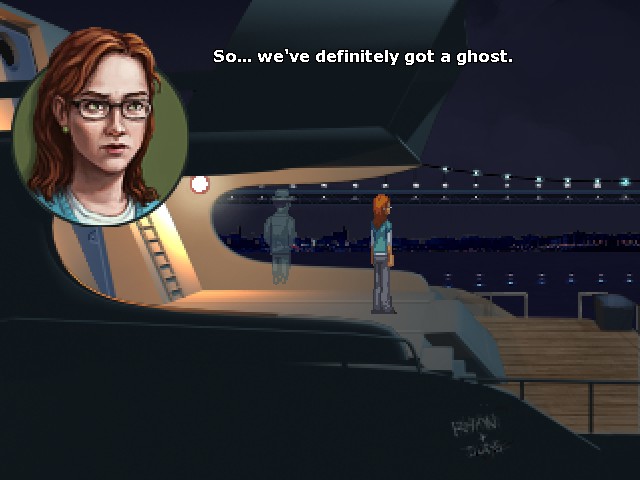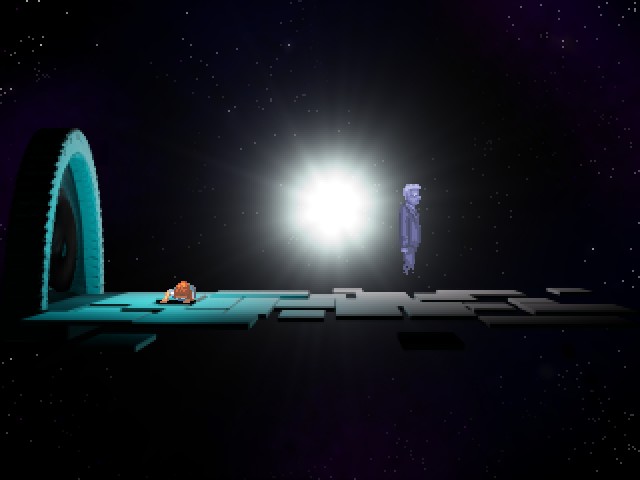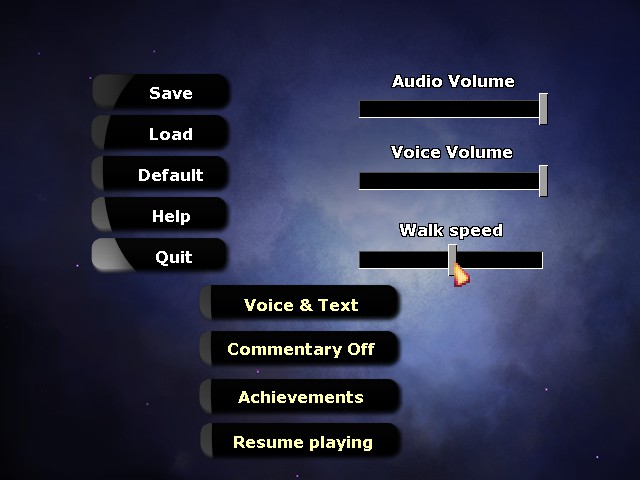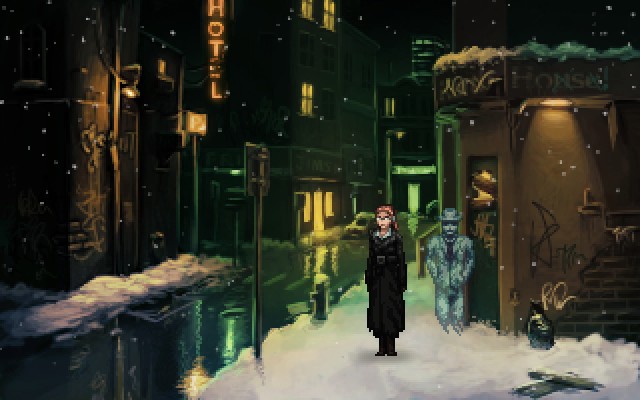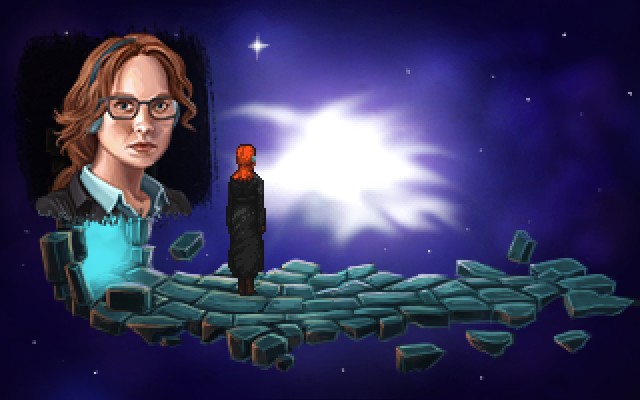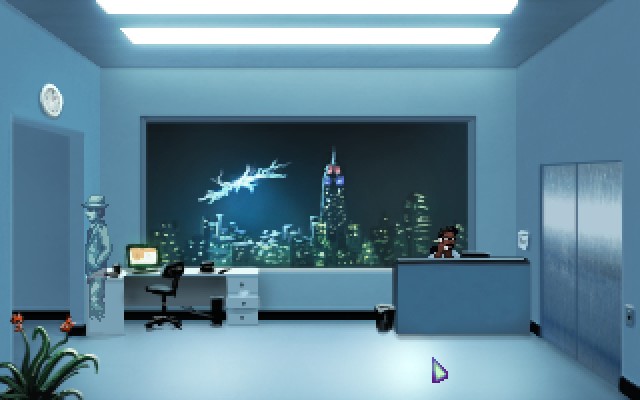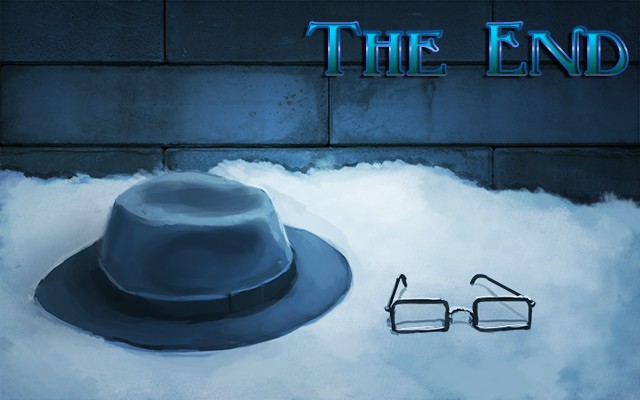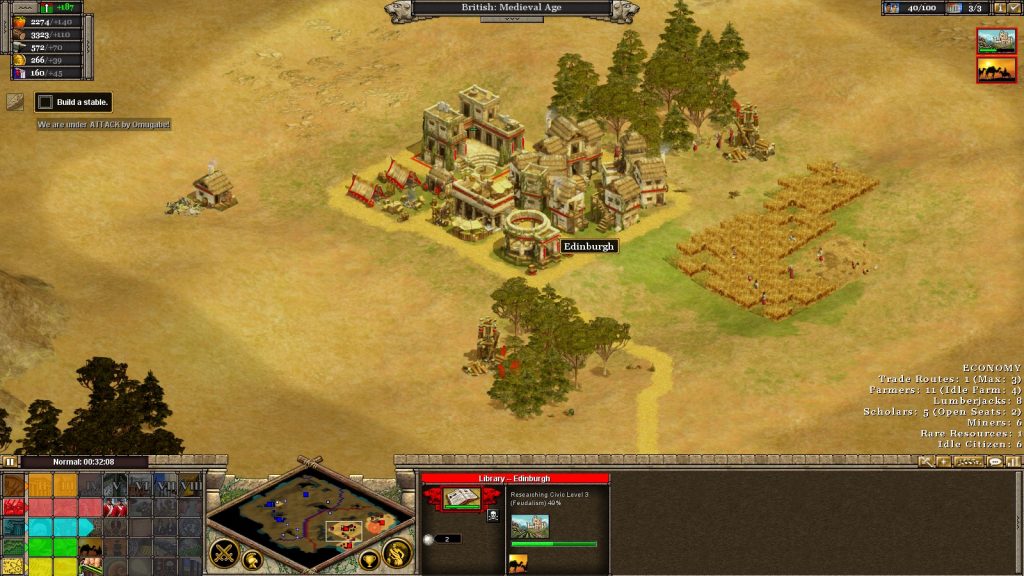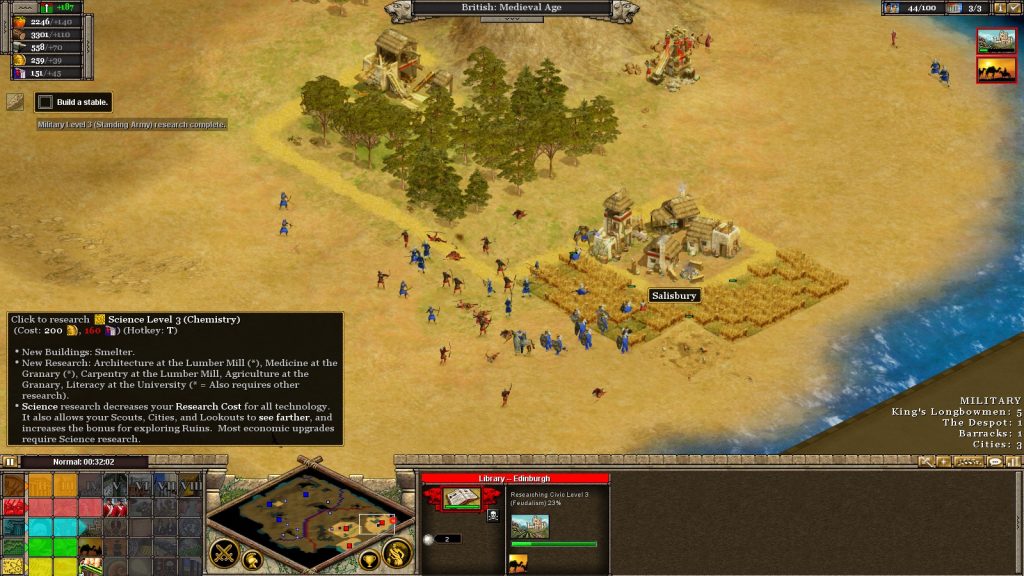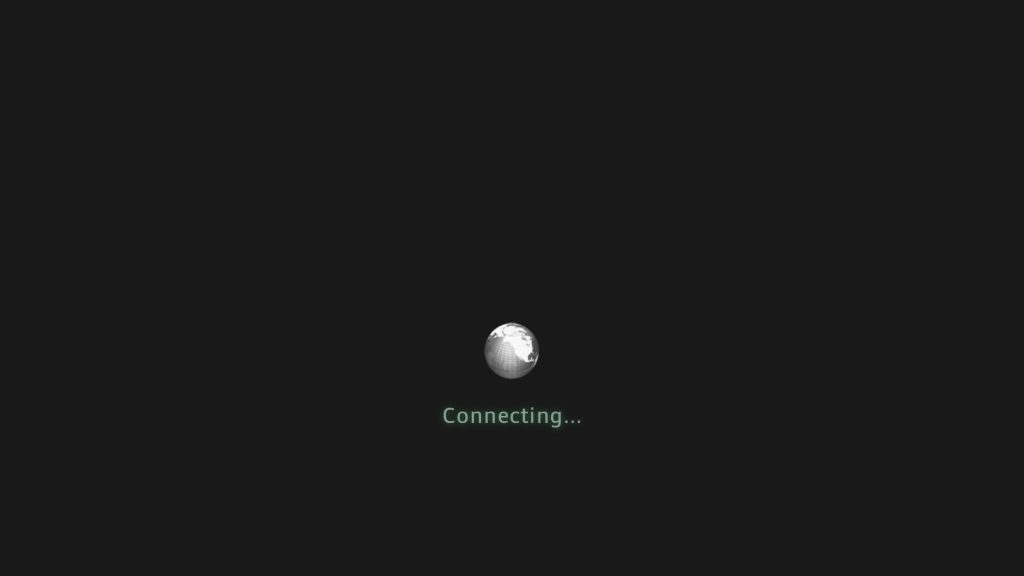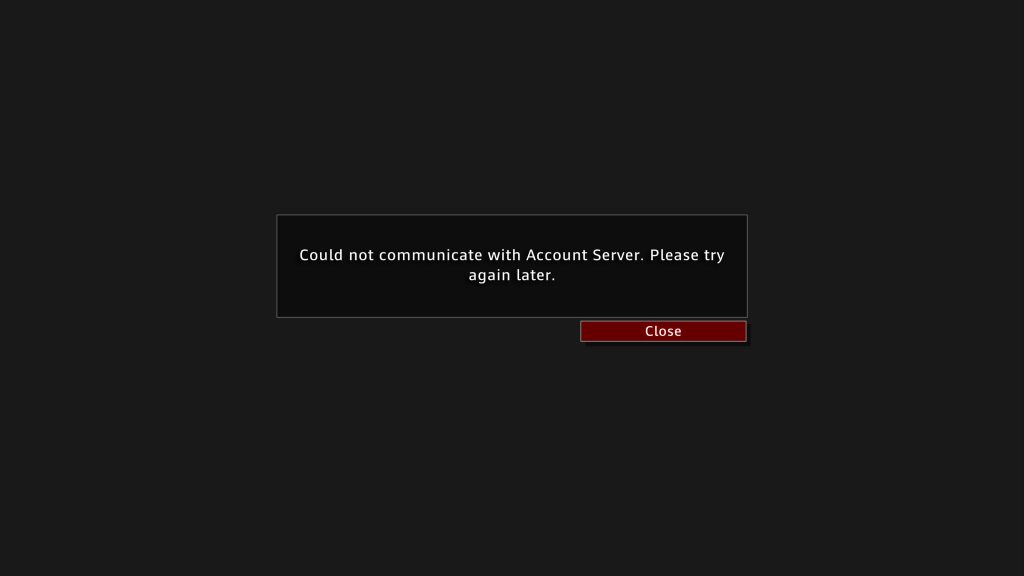The trouble with drawing a series in our Steam roulette is that it really puts a dent in my enthusiasm. There’s always so many games to review all at once. Sure, I could review them one at a time, but then I won’t really be able to compare them accurately. Then, because reviewing multiple games takes a lot of time, I put it off and just don’t play anything (well, except Android: Netrunner). So it went with Tom Clancy’s Rainbow Six. Finally, I got around to it; and right off the bat, Tom Clancy’s Rainbow Six seems to avoid many issues I have with FPSs – at least early on.
Author: LepcisMagna
Dark Souls
Dark Souls is my favorite game series. It’s good enough that even disliking Dark Souls II as much as I do doesn’t unseat it (the Valve-verse of Half-Life and Portal would likely be my second). I first heard about it in probably much the same way you have: that it is a remarkably difficult game with a fanatical fanbase. And also like many, I avoided it because I had heard it was so difficult. It was only when Chezni suggested that we co-op some parts of the game that I started playing. And I died. A lot. I hated it. I thought it was an unnecessarily difficult game – only fun for people who play all their games on hard mode. I preferred wandering around Skyrim, getting lost, and filling my quest log with a laundry list of dungeons to clear – why would I want to play a game that just wasn’t fun?
Slowly, though, I progressed. I learned about dropping from heights to deal more damage. I threw myself against the Asylum Demon until I beat it through a combination of luck and Chezni’s advice. I fought, inch by inch, through the Undead Burg. I figured, to borrow from Zero Punctuation, that “I’ll just keep tanking the rakes and maybe I’ll somehow become really psychotically into being rake-faced […] and I’ll be blatted in the face with rake if that isn’t kind of what happened.” It may have taken me half of the original Dark Souls, but eventually I found myself having fun. A lot of fun. So much fun that I kept coming back even after having beaten the game to play through on NG+. Later, Chezni and I powered through the first few hours of Dark Souls III, which turned out to be just as good as the original (I’m intentionally omitting Dark Souls II in this statement, which I’ll get in to later). So why did I change my mind, and why should you? Continue reading “Dark Souls”
World of Goo
World of Goo is an award-winning indie game about building structures out of black balls of goo/tar. It’s a physics structure-building puzzle game, and it’s….okay? I guess? It feels almost sacrilegious to put this in Tier Three given how many good things I’ve heard about this game. But the thing is, I’ve played this game on Kongregate. Well, not World of Goo specifically, but so, so many games like it. And I’ve played better versions; you see, World of Goo has both camera issues and control issues. You can scroll around the map by moving to the edges – but the detection is just a tad too large, scrolling around your already small play space wildly. Grabbing new nodes is a bit persnickety, since the goo balls (used for building) in your existing structure move around randomly. This is particularly annoying since there isn’t a good reason that the game couldn’t just automatically spawn one wherever you click (as long as you had goo left).
From a technical standpoint, the lack of any graphical options whatsoever is a bit annoying. It runs at one (low) resolution, full screen (admittedly, I didn’t try ctrl-enter to try it in a window). When my monitor has 8-12 times the resolution as the game’s only resolution, things tend to look a bit pixellated. It’s a small complaint, but one that bothers me. I can forgive Doom, made in 1993, for running at a low resolution. But World of Goo came out in 2008 (which I’ve just realized was almost a decade ago now – yeesh).
If this sounds a bit cranky and short-tempered, I’ll be honest: I’m writing this review so I can make Dark Souls the 100th post – so my heart wasn’t particularly into writing this one. World of Goo might be worth your time, and it is only five bucks. For me, it must be resigned to Tier Three.
Sunless Sea
“Lose your mind. Eat your crew. Die.”
This is the motto of Sunless Sea, and well it encapsulates the nature of this sea-faring adventure game with roguelike elements. The premise is straightforward yet perfectly hints at what is to come: 100 years ago, London fell beneath the earth into the Sunless Sea. You are out to seek your fortune in this dangerous world, and can choose one of several goals. The DLC (Zubmariner) adds the goal of immortality, so of course I chose that one.
Along the way toward your goal, you meet strange and fascinating people, visit alien islands, and occasionally sail off the edge of the world to meet an elder god and have his minion join your crew. The draw of all this are the countless, beautifully written stories you run into at every turn. This game is narrative storytelling done right – a well-written text adventure punctuated by vast, empty sea.
On that note, it might be tempting to criticize Sunless Sea for the sheer time it takes to get from one point on the map to the other. Your ship moves painfully slowly across seemingly endless sea. But I think it would be impossible to have this game without those long moments of nothingness. Indeed, at the heart of Sunless Sea is a feeling of exploration. Your supplies running low, the terror mounting as you sail into utter blackness simply hoping for a port to appear on the horizon. That’s what makes exploration exhilarating – and it would be impossible to have the moments of adventure and discovery without the blackness between. That’s something Elite: Dangerous tried to have, but spread itself too thin in the process.
From a mechanics standpoint, Sunless Sea is very straightforward. You purchase fuel and food, keep within sight of land to stall rising terror from your crew, and occasionally battle a sea monster or pirate ship with under-powered weapons and a paper-thin hull. This is my only point of contention with Sunless Sea: the AI for the pirates is bad enough that you can just follow right behind them and win every time, while the sea monsters are maneuverable enough that very little can be gained from fighting them for most of the game – it’s easier to just run away. There’s little middle ground to the challenge, which is a pity.
Even so, I can forgive the terrible combat since Sunless Sea is much more about exploration and narrative adventure – and that it does well. There are few reliable trade routes that are worth the supplies required, so your best bet is almost always to continue exploring – story events will often reward you handsomely. The stories you find are typically as isolated as the islands they take place on, but there is enough connective tissue in quests from London that it never feels entirely disconnected.
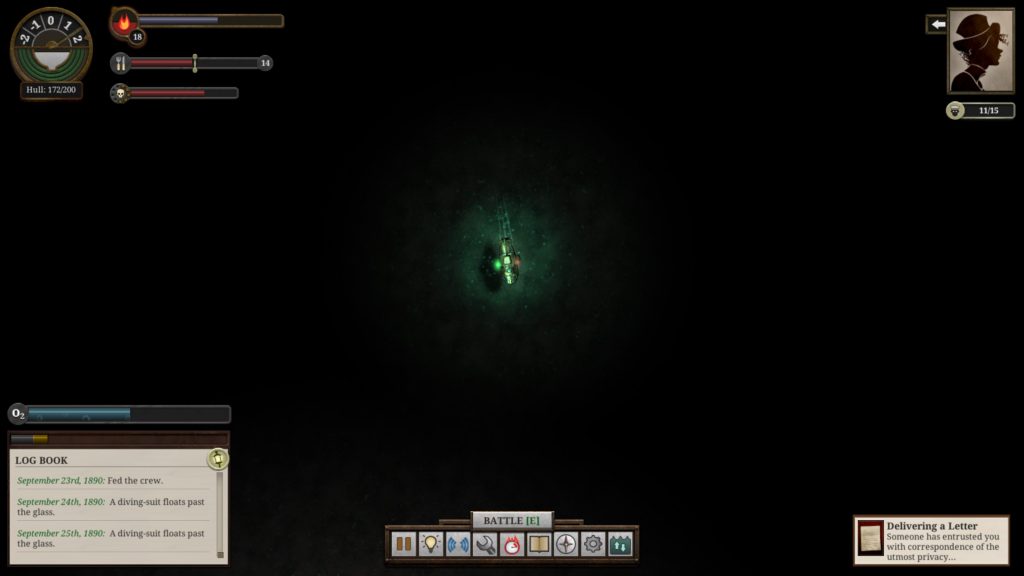
I’ll admit, I’m struggling to write this – partially because I’ve been idle for so long and partially because anything I could write is put to shame by the quality of writing within Sunless Sea. I’ll leave it at this: Sunless Sea is a solid Tier One – something you can get lost in; not as perfect as FTL, but forgiven for its depth of story and perfect evocation of being a Zailor on the Sunless Sea.
Boss Monster (with Expansion)
It’s been a while since I’ve posted. Too long a while. That’s mostly because I’ve been playing Dark Souls III – a review I want to write soon, but one that I’m not sure I can do justice.
In the meantime, I have played another board game with Chezni at our FLGS. This time, the game is Boss Monster with its expansion “The Next Level.” When we first played this some time ago, it seemed a tad simplistic, but with a lot of potential. Now that we’ve played with the expansion, I can say definitively that the game – as it comes out of the box – is disappointing. The typical game goes something like this: You are the boss of a dungeon, à la Dungeon Keeper (the original, not that abomination). You build a dungeon using card “rooms,” and heroes come to attack you and the other players based on the room card treasure types (of which there are four). You have a rather limited pool of spells you can use to help yourself or hinder the other players, but they are sorely underused. There is very little interaction with the other players beyond choosing your dungeon treasure specialization. Once you’ve built a reasonable dungeon, the game becomes a bit of a slow plod to the victory condition (beating all the heroes or acquiring 10 hero souls in our game). This is quite sad, since the rooms and spells are varied and interact with each other in interesting ways.
So here are the problems: First, spells are criminally underused unless you fall into the “Mage” category of dungeon (even then, the rooms which allow you to draw spells are typically underpowered). Second, games are either too short (with normal victory conditions) or far too long (with the alternate game modes). Finally, interaction with the other player dungeons is almost nonexistent and the heroes themselves aren’t unique or interesting enough to provide challenge or variety enough to make this a good game. This is terrible, since the cards themselves are well-made, pretty, and well-balanced. Chezni and I spent some time trying to fix these problems, and here’s what we came up with:
Changes:
- Draw a room card OR a spell card at the beginning of each turn, and remove all the “Haunted Library” cards from the deck.
- In a two-player game, set the win condition to 20 points. In general, increase win conditions for fewer players and increase loss conditions for more players.
- In a two-player game, remove half the ordinary hero cards if you are playing with the expansion.
- Set a maximum for +x spell cards to +3 for balance.
These changes allow for an early race to build a suitable dungeon, but ensure that once you have a good enough dungeon you are able to focus on inhibiting the other players by drawing spell cards instead. Since the Sorcerobe School cards do essentially this, it makes sense to just remove them from the game. Increasing the victory condition allows you to have a more entertaining game by ensuring you get epic heroes and good use out of spell cards. Together, these fixes bring this game from “okay, but flawed” to “actually fun”; or, in PICD terms: from Tier Three to Tier One.
EDIT 2018-10-03: We have confirmed that this is a fun game with the above changes for two players. Adding spells makes the game far more dynamic and interactive – things can change quickly and there’s a lot more play between bosses, rather than just running your own dungeon.
Android: Netrunner
You can find the decks we have built here, in chronological order.
Our review of Android: Netrunner can be found by clicking into this post.
Continue reading “Android: Netrunner”Tomb Raider
I suppose it was inevitable that I’d be rolling a lot of big series in my Steam lottery. I have many, many games that are part of a series that I haven’t played. Mostly, I held off because I like to start at the beginning of a series, and the first game is usually not that great (I’m looking at you, Final Fantasy. And Ultima.). This time, it’s Tomb Raider and the various adventures of Lara Croft. I have now tried all the PC-released Tomb Raiders (except Rise of the Tomb Raider. Don’t have that one – though I’ve heard good things). There’s a lot to say here, but I’ll try to keep things moving quickly.
The Tomb Raider franchise is one of the most well-known of video game franchises, and Lara Croft is perhaps the most famous female video game character thus far in gaming history (competing with Princess Peach, Samus Aran, and Cortana). The PC releases of the franchise can be broken into three categories: the originals – built on the classic engine, the Legend chronology – built on the Legend engine, and the modern era – a hard reboot from 2013.
Tomb Raider, Tomb Raider II, Tomb Raider III, Last Revelation, Chronicles, Angel of Darkness
Why, you might ask, are all six of these games grouped together? It’s because I’m cheating a bit. I’m lumping all of these into the “Technical Issues” category – though not because the games didn’t run on my computer. They’re being shuffled to the side because I just could not get the hang of the controls. Between not having mouselook and Lara turning and jumping crazily, my ability to play these games is almost non-existent. Back when they were released, I’m sure I would have put the time into learning the controls – but today? I’m content to just look for a fan mod that makes it easier to play. I do want to comment on my (limited) experience, but that will wait until my discussion of Lara herself.
Tomb Raider Legend and Tomb Raider Anniversary
These two games marked the first soft reboot of the series and a long-overdue move to a far superior game engine. Both of these games go solidly into Tier One – Legend is the only game I played longer than I force myself to – and Anniversary seemed on par. The platforming isn’t as terrible as in previous games (or future ones, for that matter), Lara is still a strong protagonist, and her legs are composed of more than three polygons. The set pieces are fun (even though I did get a bit lost). Near the beginning there’s an arena that I got stuck in for about ten minutes while I tried to find my way out. That brings me to the two problems I had with this section of games: puzzles aren’t always clearly presented, and climbing is a bit tricky (and not in a good way).
My complaints wouldn’t be such a problem except that puzzles and climbing are the bread and butter of the Tomb Raider franchise. While it kept being fun, I found myself wishing that these games had the puzzle-presentation of Valve with the free-running of Assassin’s Creed. There’s a bit of advice (I don’t remember where I first heard it) about puzzles: it stated that a good video game puzzle is one that you have all the pieces to. In Tomb Raider Legend, there’s far too many instances where a puzzle relies on a small hidden door or switch – this is acceptable from time to time, but it breaks the flow of the game when it goes on too long. Similarly, climbing is limited to very specific (and often unclearly marked) ledges – which makes the navigation part of the game that much more obtuse.
Nevertheless, these games were fun and kept me interested and playing. In fact, Anniversary (a re-imagining of the first game with the engine of Legend) had that ineffable “good” feeling you get when playing a game that is just plain fun.
Tomb Raider Underworld
Those of you who have played the Tomb Raider franchise may have noticed I left off one of the Legend engine games: Underworld. This is because it goes into Tier Three, unlike its predecessors. It goes into Tier Three for two reasons. First, the camera and movement. While Legend and Anniversary’s camera control was reasonable, Underworld’s camera and Lara’s direction of movement will only occasionally follow your command.
The second problem comes from the ridiculous and contrived plot – which is a remarkable complaint when talking about a Tomb Raider game. But as you see above, one of your first tasks is to murder a giant octopus. Typically, it is best to descend slowly into strange worlds: slowly revealing more and more unnatural things. Underworld pays little mind to this – or to reason itself – preferring to have a plot that progresses because there wouldn’t be a story otherwise. Why do you kill the octopus? No particular reason. Why do you call your team before diving to the underground city? No reason. How do the “bad guys” show up immediately behind you with no warning and entirely silently? Because there wouldn’t be as much plot otherwise. This seems to be a theme throughout the game – trying to “raise the stakes” just results in an unbelievable story.
Tomb Raider
Finally, we come to the most recent reboot. I don’t have any pictures for this section since I actually beat this game a year or two ago. Since it is part of the same series, I thought I should talk about it briefly here. This also gives me the chance to put a second game into Tier Four. I recently talked with Chezni about Tier Four, and it turns out we had different ideas about what it meant. The definition on the rules states that Tier Four games are not worth the time put into them. I had taken that to mean the time spent to play them was entirely wasted, while Chezni saw the definition as saying that the game itself was not worth the time spent developing it. I like that definition more, and it is the definition I use here.
So why does the Tomb Raider reboot go into Tier Four – particularly given the large number of accolades it received? It’s not because it uses the most cliche of plots (with Nazis and supposedly sympathetic nerds sacrificing themselves for no good reason). Instead, it starts with quick-time events. Quick-time events pervade Tomb Raider and its cutscenes – these replace gameplay with a punishment for not knowing exactly which buttons to push. This is apparent challenge without real challenge, and they only exist to give the player a feeling of accomplishment for doing something cool during what might as well be a cutscene. And if you fail? You run into the next problem: the unreasonably gruesome deaths of Lara Croft.
Lara Croft will die in the most horrific and terrible ways – for no good reason (quite often that you hit the wrong button during a QTE). While playing the game I could only guess that the game designers really, really liked blood and watching people die. Recently, I was talking with Chezni and he mentioned that the producer wanted it this way to inspire the player to want to protect Lara – which certainly explains some things (more on that later). I have no problem with gore or violence. I have a problem with pointless gore and violence. Think about the time the developers spent on animating Lara getting eaten by dogs, impaled by spikes, and nearly/probably raped. Think about the time they could have spend making more places to explore. Get mad.
Finally, we have the biggest problem – at least gameplay-wise. There are mini-temples and crafting mechanics throughout the game, but no motivation to actually use them. I finished the game without finishing a single side-dungeon – and only actually finding one. The game is designed to trick you into thinking you have a whole island to explore. But really, you just follow a set of linear quests to the end of the game. Admittedly, I did not take their chances to explore the island – for the reason that at every point in the main quest-line, you are given a sense of urgency to complete the next mission. I took this to mean that perhaps Lara would return to the island after finishing the plot and give you time to go find all the nooks and crannies where treasure might be hidden. It did not. The Lara in this game would likely never return to this island even if it contained the most fabulous treasures in the world.
Lara Croft
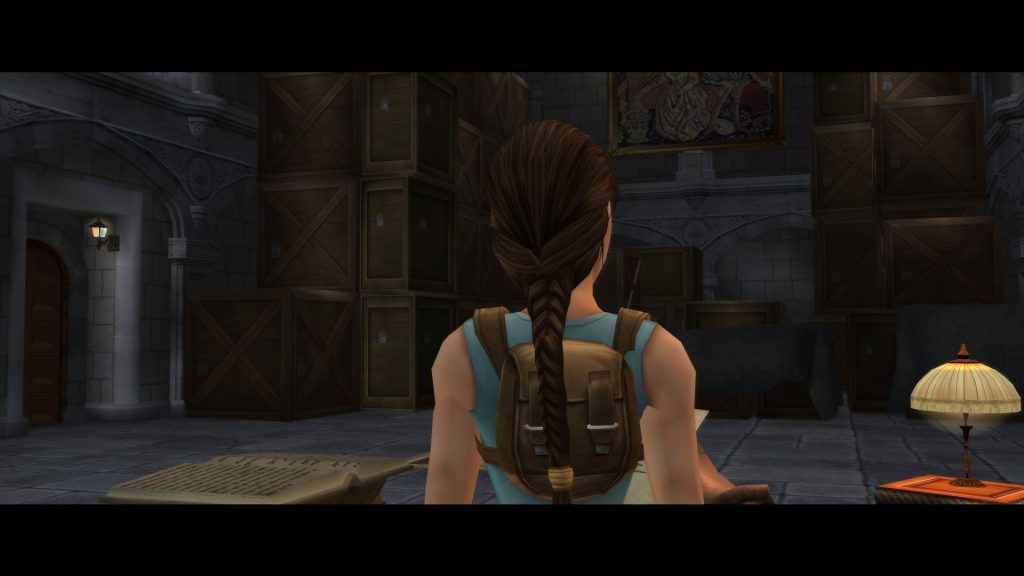
Lara Croft is a difficult character to analyze, made more difficult by the four distinct takes on her character. The Lara Croft of the first six games, the Lara Croft of the Legend trilogy, the Lara Croft of the reboot, and the Lara Croft of the movies are all distinct. Perhaps the best way to describe her influence is controversial (I promise I wrote that before reading her Wikipedia article). On the one hand, all but her most recent portrayal has been as a devil-may-care action hero. On the other hand, perhaps her most famous physical feature is her remarkable pair of…eyes. And if you played video games in the ’90s and early 2000s, it was almost impossible to avoid the seemingly endless supply of nude mods for the Tomb Raider games. Though, on this last point, I’m not sure we should judge a character based on what is done to them by the internet – Rule 34 exists for a reason.
We are faced with two aspects of Lara Croft that diminished as the series progressed: body proportions and sassiness. Earlier iterations of Lara were entirely unrealistic, but she also commanded an attitude of control and confidence – approaching a level rivaling Saints Row. The Legend games toned down both her unrealistic proportions and her remarkable attitude. I think this was probably the sweet spot for Lara as a character – even if it was still on the side of unrealistically proportioned. An action hero can be unrealistic both in character and in body, as long as neither are taken too seriously. At the same time, this must be balanced by believability if you want to start telling a complex story. This toning down continued on both fronts into the reboot – and Lara became yet another bland protagonist for people to project their fancies on.
The Lara of earlier games is an action hero in the style of Bruce Willis in The Fifth Element or RED – ridiculous, over-the-top, and a bunch of fun (if a bit questionable on occasion). This is important because these elements are so diminished in Underworld and non-existent in the reboot universe. In attempting to make Lara more realistic, they made Lara less Lara.
Oh well. At least the developers of Tomb Raider don’t care about body proportions regardless of gender:
Blackwell
Blackwell: A five game series of point-and-click adventures about guiding lost souls to the afterlife. I love point-and-clicks, and Blackwell has a lot of good elements to it – psychic detectives, a touch of gothic horror, and just a good overall point–and–click atmosphere. Unfortunately, unlike the games I just linked, those elements just never came together for me. This view may be biased (particularly against the later games) since I just came off of 10 hours of playing through the series (and I’ll admit, I had to look up a few puzzles), but I feel that I have to write this before my memory fails me.
Point-and-Clicks
That isn’t to say that these games are bad – in fact, they steadily improve as you play through the series. These are solid Tier Two games – with the notable exception of the second game, Blackwell Unbound. The trouble here comes more from the potential you find in point-and-click games. For me, point-and-click games exist in a unique middle ground for video games. In a fully “free” or open-world game, your practically unlimited agency makes small things like not being able to jump a two-foot-high fence a remarkable annoyance. In a platformer, story is often neglected. In a visual novel, there is no real challenge or choice (though there are exceptions to that rule). Conversely, a good point-and-click adventure gives you just the amount of freedom to let you feel as if you contribute, just enough challenge to keep you thinking, and just enough story to keep you engaged.
Perhaps I’m biased. At the end of my favorite point-and-click, The Longest Journey, I found myself unable to play any video games for a day or two – anything else would have been less perfect. Between TLJ representing the pinnacle of story-telling and Submachine representing the pinnacle of puzzle-solving, any new point-and-click adventure game has a high bar to clear. But before I go further about the overarching adventure, let me give you my per-game opinions. For the record – and because I was constantly confused about it myself – the games go in this order:
- The Blackwell Legacy
- Blackwell Unbound
- Blackwell Convergence
- Blackwell Deception
- Blackwell Epiphany
The Blackwell Legacy
I’m afraid I don’t have any pictures for this one, since I beat it some time ago. That says something, as I never found the motivation to go on to the rest of the series. The protagonist, Rosa Blackwell, is a medium that leads lost souls – ghosts – to the afterlife, with the aid of her spirit guide, Joey Mallone. Joey is a 30s clothing shop clerk who was gunned down after his best friend got into debt with a loan shark. This is important, as it is never clearly explained why Joey is special or how often these “spirit guides” are created. A Tier Two game since I had fun, but there wasn’t enough of the overarching plot to really draw me in.
Blackwell Unbound
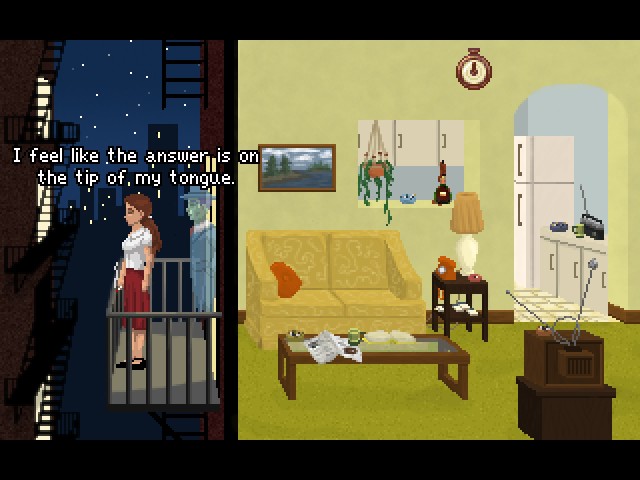
Unbound is a prequel, following the aunt of Rosa – mentioned in the first game – back before she lost her grip on reality after the universe poured into her mind. That’s understandable, but this game frustrated me the most in the series. The protagonist isn’t particularly likable, the puzzles were the worst of the series, and the only connection to the main games was explained in 30 seconds in the next game. You can safely skip this game and move on to Convergence without losing much, so it must be relegated to Tier Three.
Blackwell Convergence
I think this was my favorite of the series: just the right blend of mysterious foreboding and day-to-day ghostbustin’. One of the most important mechanical changes happened here as well – your cursor changes color depending on which character you are currently controlling (which was quite relieving, having played the previous game). The series’ art also peaked right around here. The pixel art may not be quite as good as Epiphany, but at least the character portraits aren’t in a jarringly different style. The NPCs are well-developed and feature some of the best side characters of the series. It finishes strong with the hope of future adventures ahead. The entire game has charm and conjures up that certain panache which good 90s games captured so well. This is the game I almost put into Tier One – and if you’re okay with a semi-cliffhanger, I’d almost suggest that you stop playing here (while also having skipped Unbound).
Blackwell Deception
And they were doing so well. While this game keeps some of the refinement of the previous one, it also introduces the two major issues I had with the series: a strangely uncharacteristic tone and an increasingly jarring art style. Scroll up a bit – see that beautiful “spiritual realm” art? Well, for some reason, this game makes the same place look like a 90s sci-fi set:
To be entirely fair, this game also introduced two things that greatly streamlined gameplay. The first is a mobile phone so you don’t have to go running home to look things up every ten seconds. The second is this slider:
Walking speed. WALKING. SPEED. Every point-and-click needs this. I almost forgive this entire game its increasingly bizarre tone just for that slider. I would sell my left arm to have that in The Longest Journey – as much as I love that game. But even counting that slider, this too must fall into Tier Two.
Blackwell Epiphany
This game has some of the best art of the series – and more importantly, it has widescreen resolutions. Well, a widescreen resolution. Did I mention that all the previous games run at 640×480? This one runs at 640×400. Apparently, HD is a foreign concept even in 2013.
Even so, the wonderful art doesn’t entirely forgive the definite changes in tone. This is certainly the most “film noir” of the series, but that doesn’t really fit in with the rest of the series. Especially when you compare Legacy to Epiphany, you wonder where the tone shift of the last two games came from. Epiphany has ghosts ripped apart, child ghosts, suicide, prostitution, and more. It really feels too much like an attempt to have a serious (and bittersweet) ending. Worse yet, several main plot points aren’t resolved and the epilogue throws in a strange twist not even hinted at previously that entirely invalidates the plot progression from the previous game. I should clarify that I’m not complaining because everything didn’t end up perfect for everyone – I’m a sucker for bittersweet endings. I’m complaining because the ending didn’t make sense and didn’t fit in with the information given to us in previous games. It avoids Tier Three because it is pretty and does provide some touching moments. At least they kinda fixed the spiritual realm art:
And now that I’m thinking about it, this scene’s art has quite the Doctor Strange vibe (though mostly I just wanted to use this screenshot).
The Series
From a mechanical standpoint, the Blackwell series isn’t particularly impressive. Visual cues are often lost in the backdrop and important mechanics don’t always act the way you want. None of the puzzles really stood out, preferring to blend into the story. That’s a stylistic choice, and I can respect that – but it does make the few puzzles which require video-gamey logic particularly immersion-breaking. This improved in later games, but there were still a few strange leaps of logic to be made, and the requirement that you talk to everyone about a subject five to six times particularly grates.
I liked the characters, and the overarching story was engaging enough to motivate me to finish the series. That being said, the tone shifts unnecessarily in the final two games: introducing elements that really don’t fit into the earlier mythos in an effort to make it more serious. Lovecraftian horror I can get behind, but the grimdark turn this game takes… I cannot. If you just play the games with Nishanthi in them (which would be the first and third ones), you’ll be fine.
Rise of Nations
Imagine Civilization crossed with Age of Empires II. Actually, you don’t even need to imagine since it exists: in the form of Rise of Nations. As a real-time 4X-ish game that progresses through the ages, it seems pretty solid. Remarkably solid, even. The thing is, I’m not a big fan of that sort of game. I’m definitely more of a Sim City or Sim Tower (or, if we’re sticking with strictly RTS, Homeworld or Masters of Orion) sort of person. So while this game seems mechanically sound and pretty deep…I can’t really say I was having fun. That being said, this game does combine a lot of the better features of both Civilization and Age of Empires. Maybe if I was playing over LAN with a few friends I would have a more favorable opinion. Since I can imagine picking this up again someday, I’m going to stick this into Tier Two, with a distinct possibility of an upgrade if it’s the right group.
R.U.S.E.
I’m afraid this impression will need to be a bit short, since the above screen represents about 75% of my playtime. R.U.S.E. had been on my Steam playlist for quite some time – next to World in Conflict. Much to my dismay, I have discovered that both of these games are no longer available and are pretty much dead. That’s…quite a pity. I had been looking forward to trying both of those games. R.U.S.E. worried me when it asked me to sign in to Ubi.com, and my fears were justified. Some quick Googling later, I find myself deprived of not one, but two games I had long thought about playing – both axed by Ubisoft. I miss hosted servers (though apparently R.U.S.E. was pulled due to a licensing agreement).

